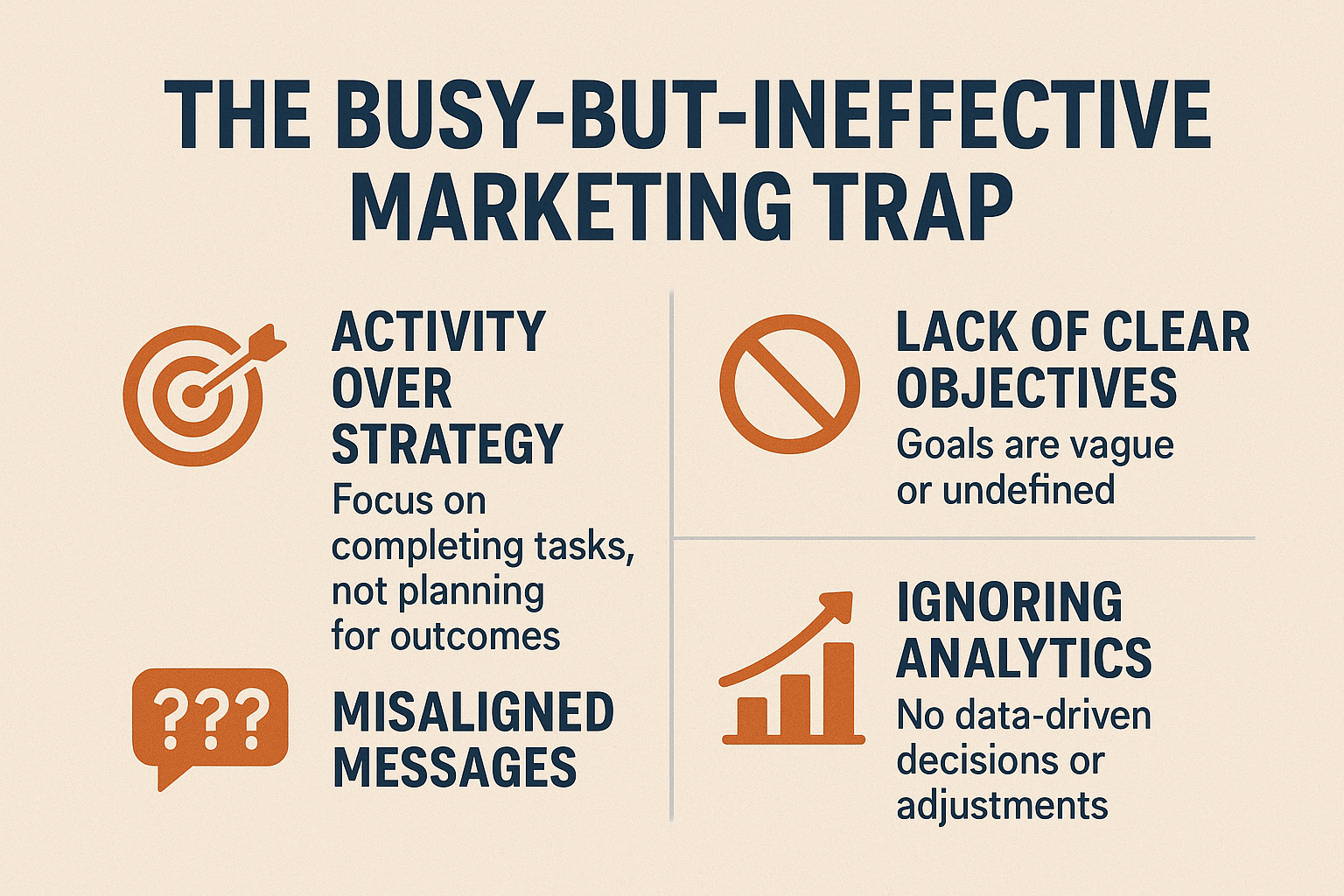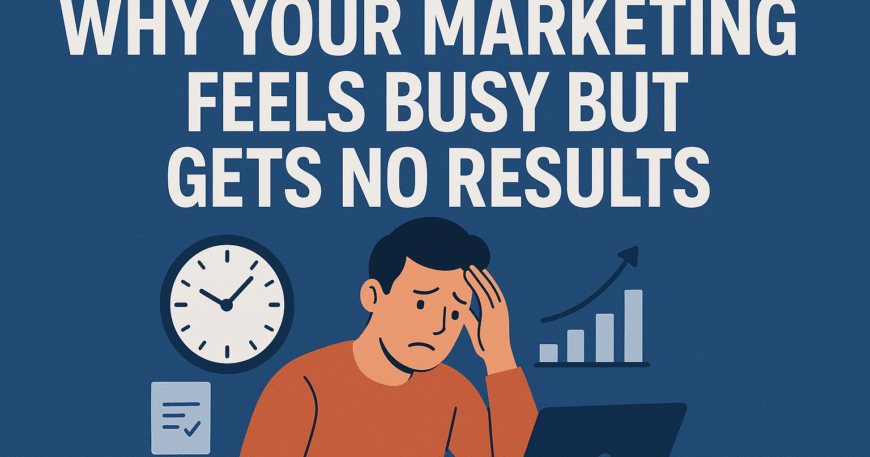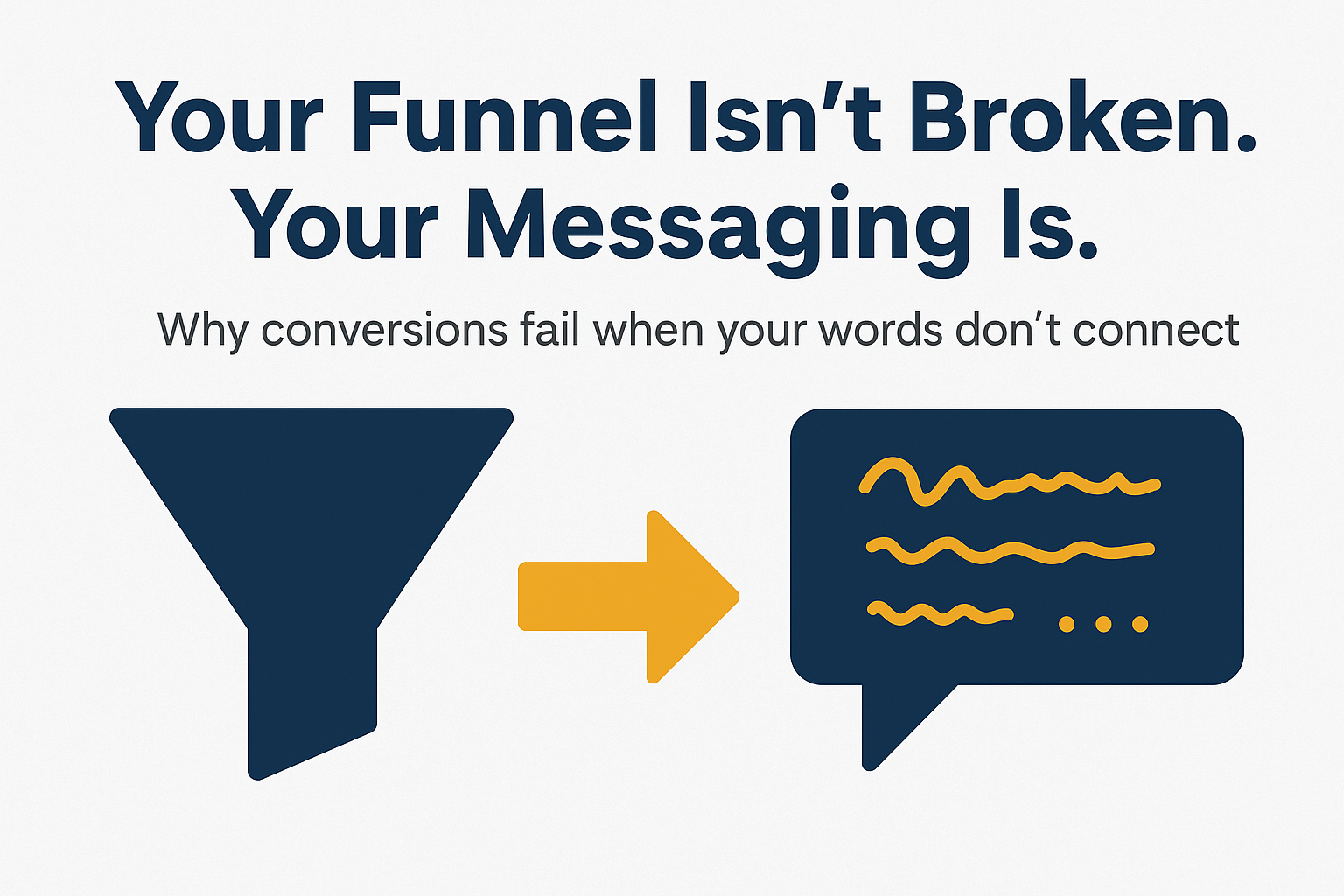Table of Contents
- The Trap of Activity Over Strategy
- Signs You’re Stuck in the Busy Cycle
- Why Strategy Matters More Than Activity
- Shifting From Busy to Effective
- The Bottom Line
Marketing today often feels like a whirlwind of tasks—posting on social media, sending emails, creating content, tracking metrics. Yet despite all the activity, the results may look underwhelming. If you’ve ever wondered why all that busyness isn’t translating into outcomes, you’re not alone. Many organizations fall into the trap of mistaking motion for progress.
In this blog, we’ll unpack the common pitfalls that lead to “busy marketing” with little payoff—and how you can reorient your efforts toward strategy and measurable results.
The Trap of Activity Over Strategy
It’s easy to feel productive when you’re checking things off a to-do list: another campaign launched, another post published. But without a clear strategy, these efforts are scattered and rarely build toward long-term goals. Activity on its own creates noise, not impact.
Many marketers confuse “being everywhere” with “making a difference.” A social media calendar packed with posts, or a long list of newsletters, doesn’t guarantee awareness or sales. True marketing success doesn’t come from doing more; it comes from doing the right things that connect with the right audience at the right time.
The problem often lies in focusing too much on tactics—like boosting a post or creating a new campaign—without first asking how these actions fit into the bigger business vision. Without a strategy to unite the work, you risk burning resources on efforts that look good on the surface but don’t drive growth.

Signs You’re Stuck in the Busy Cycle
You might be caught in the busyness trap if:
- You focus more on volume (number of posts, emails, or campaigns) than on outcomes.
- Your team feels overwhelmed but can’t clearly point to wins that matter.
- Reporting highlights vanity metrics (likes, impressions, clicks) instead of real business results (leads, revenue, retention).
- Campaigns lack a unifying goal or measurable purpose.
If these sound familiar, it’s worth taking a pause. Busy marketing often comes from the pressure to “keep up” with competitors or to show constant activity to stakeholders. But busyness creates the illusion of progress while the bigger opportunities—like nurturing leads, building authority, or strengthening customer relationships—get neglected.
Another sign of the busy cycle is inconsistent messaging. When you’re rushing to push content, the tone, value proposition, and brand story can shift from campaign to campaign. This confuses your audience and weakens your positioning in the market.
Why Strategy Matters More Than Activity
Strategy provides direction and clarity. It ensures that every piece of content, ad spend, or outreach serves a defined objective. Without it, you’re essentially throwing darts in the dark, hoping something sticks.
A strong strategy connects marketing with the larger business goals. For example, if the company’s focus is expanding into a new region, strategy guides you to tailor campaigns for that market rather than running generic awareness ads everywhere. It aligns actions with outcomes.
Moreover, strategy helps allocate resources wisely. Instead of spreading your budget thin across multiple platforms, you can double down on the ones that truly engage your audience. This doesn’t just save money; it improves ROI. When strategy leads, activity becomes purposeful, measurable, and impactful.
Shifting From Busy to Effective
Here’s how to reframe your marketing efforts:
Define clear goals – Tie activities to specific outcomes (brand awareness, lead generation, conversions, customer loyalty). Goals create a north star, making it easier to evaluate whether your efforts are working.
Focus on fewer, better initiatives – Rather than doing ten things halfway, invest in two or three initiatives that directly serve your goals. Focused execution creates stronger results and reduces burnout.
Measure what matters – Vanity metrics feel good but rarely prove business impact. Instead, measure KPIs that influence revenue, customer acquisition, or retention. This shifts the conversation from “we got 1,000 likes” to “we generated 100 qualified leads.”
Create systems, not just actions – Build repeatable frameworks such as campaign playbooks, content pillars, or lead-nurturing workflows. Systems reduce chaos and ensure consistency over time.
Review and adjust – The market changes, competitors evolve, and customer behavior shifts. Regularly analyze data and refine strategies so your marketing stays relevant and effective.
This shift is not about doing less work; it’s about doing smarter work. Teams that embrace strategy find themselves more confident, less reactive, and better able to demonstrate marketing’s role in business growth.
The Bottom Line
Marketing that feels busy but yields no results is a symptom of activity without strategy. By stepping back, clarifying goals, and focusing on outcomes, you can transform your marketing from noise into meaningful business growth.
The key is to stop confusing motion with progress. Don’t measure success by how much you do—measure it by the impact you create. A few well-placed, strategic actions will always outperform a calendar packed with uncoordinated tasks.




